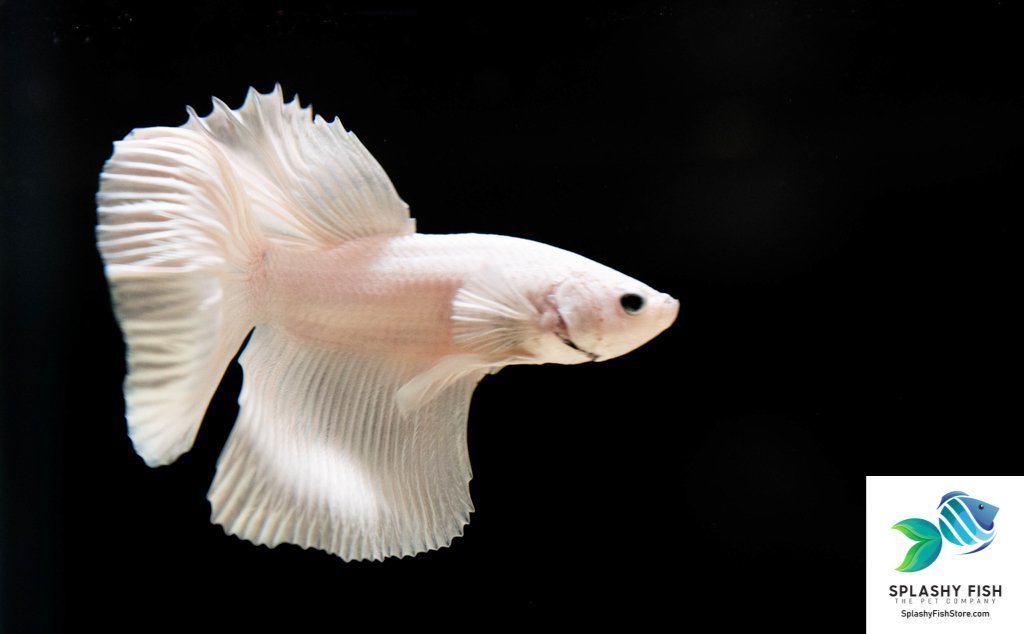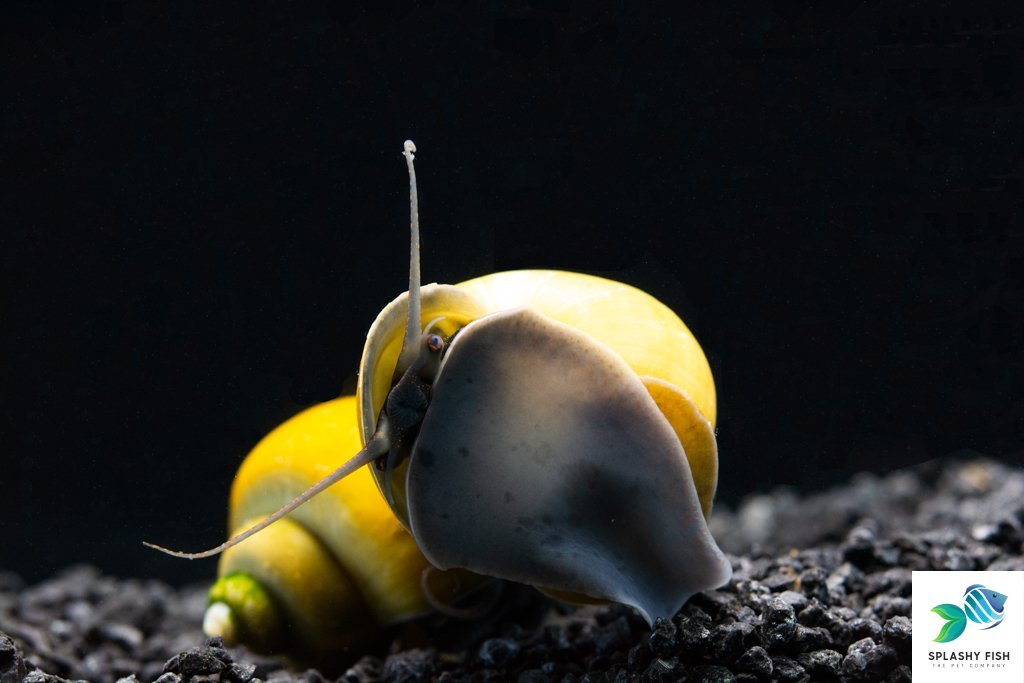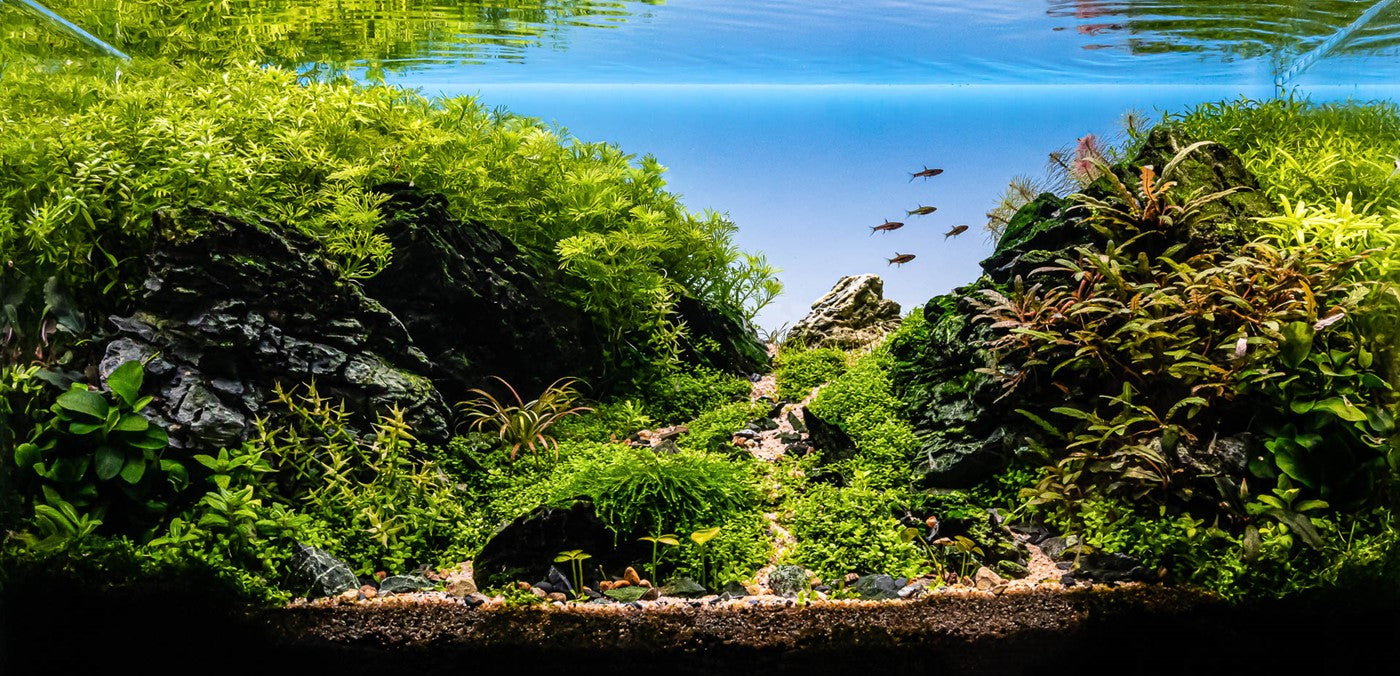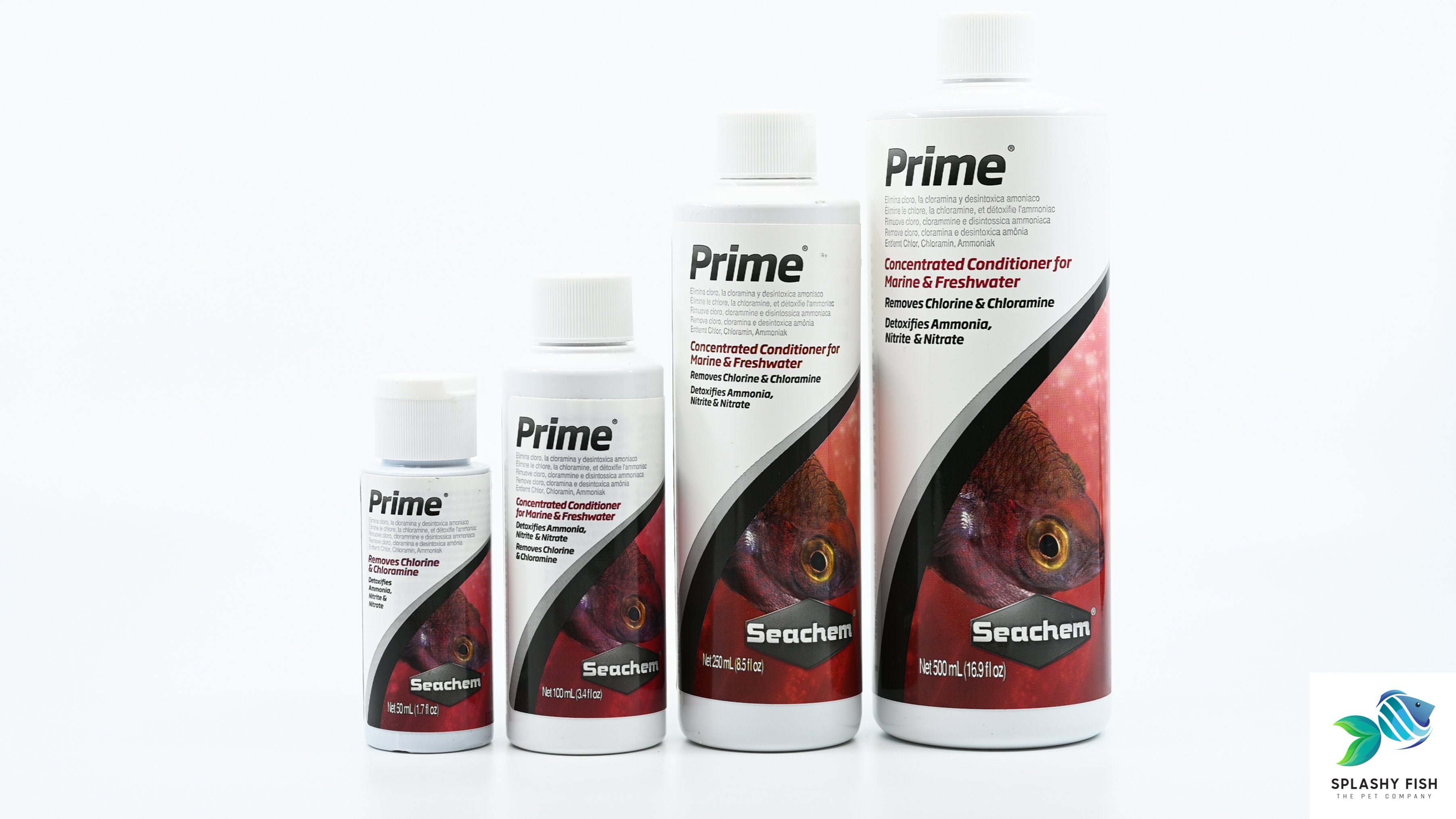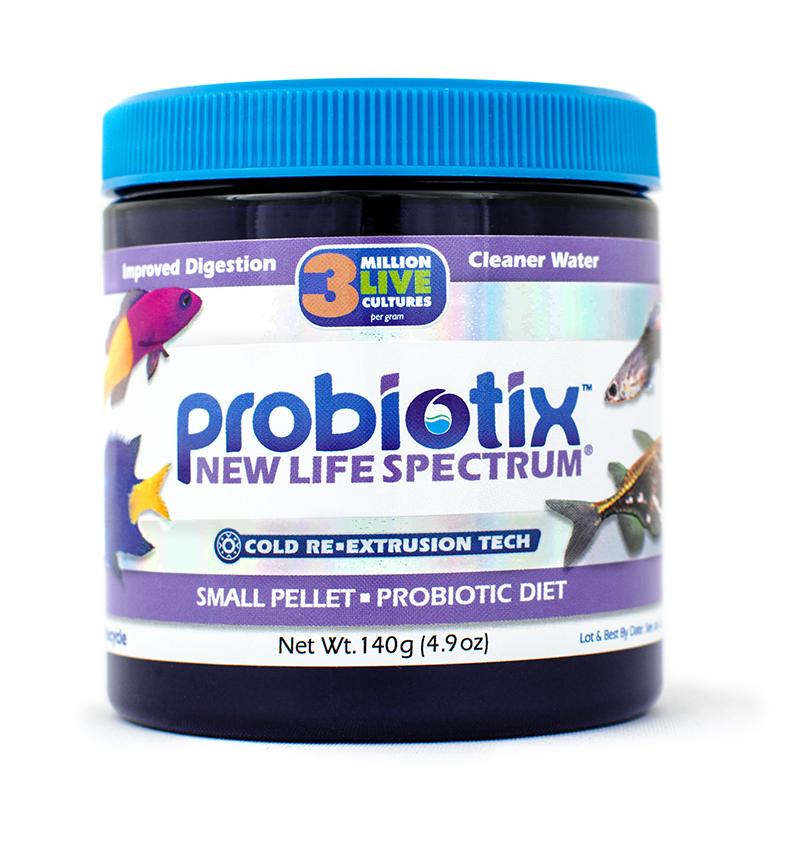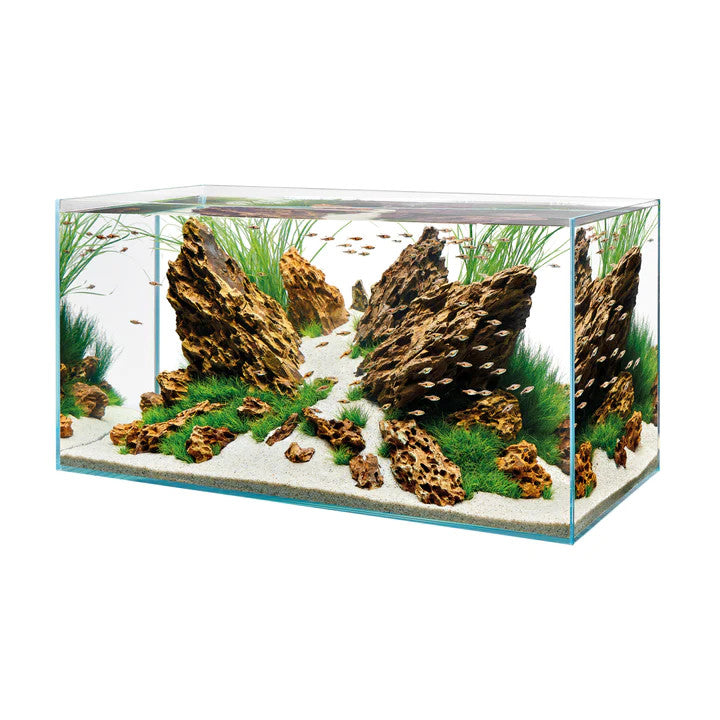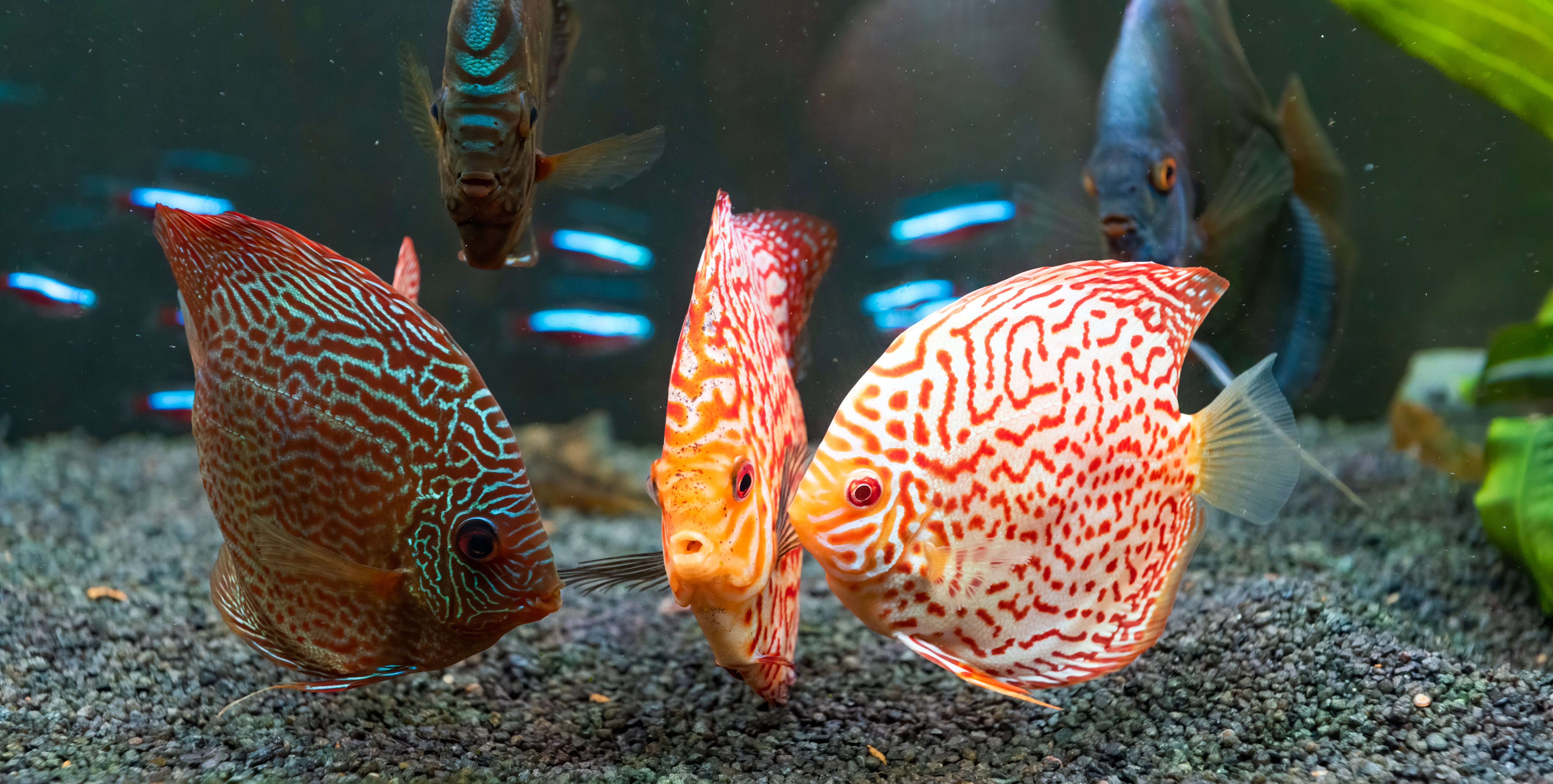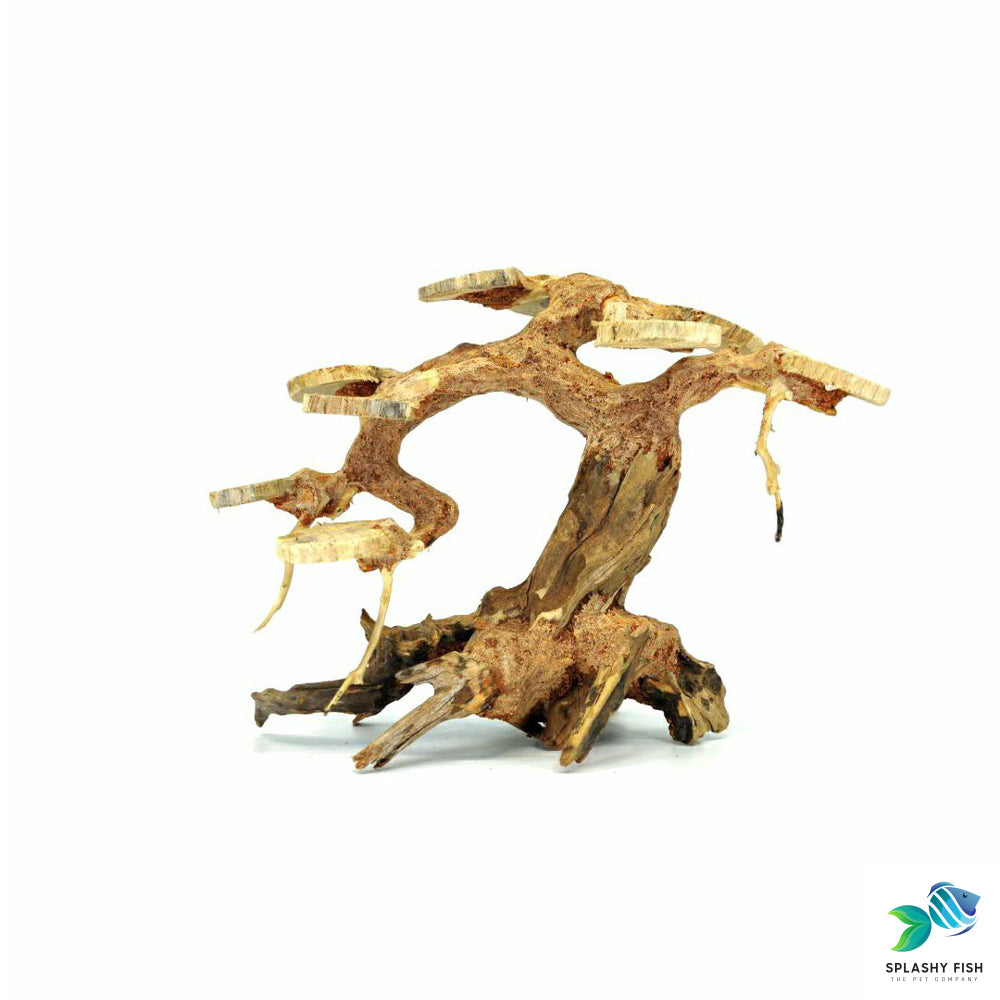
Caridina Shrimp
Caridina shrimp are a popular choice among aquarists due to their small size, attractive appearance, and easy care. These freshwater shrimp are native to Southeast Asia and are known for their delicate, translucent bodies and bright colors, which can range from red and orange to green and blue. Caridina shrimps are generally peaceful and can be kept in a variety of tank setups, including community tanks and planted tanks. They are known to be efficient scavengers and can help keep the aquarium substrate and live plants clean by eating algae and detritus. In addition to their functional value, Caridina Shrimp are also prized for their beauty and can add a touch of color and interest to your tank. With proper care, including a high-quality diet and good water conditions, Caridina Shrimp can make interesting and rewarding pets.
At Splashy Fish Store, our Caridina shrimp for sale are carefully hand-selected and quarantined before shipping to ensure the highest quality when the order comes to our customers. Visit us to buy these Caridina shrimp online or at our aquarium store in Virginia for more other freshwater shrimp for sale, aquatic shrimp for sale, Neocaridina shrimp for sale, freshwater fish for sale, and live aquatic plants for sale.
Caridina Shrimp Frequently Asked Questions FAQs
Will Caridina shrimp breed with neocaridina shrimp?
No, Caridina shrimp and Neocaridina shrimp typically do not interbreed. They belong to different genera and have different genetic characteristics, making successful breeding between the two unlikely. Caridina shrimp species, such as Crystal Red Shrimp or Bee Shrimp, have specific water parameter requirements and breeding behaviors distinct from Neocaridina species, like Red Cherry Shrimp, Snowball Shrimp. Keeping them separate in the aquarium is advisable to maintain the purity of each species.
Do caridina shrimp need RO water?
Yes, Caridina shrimp, such as Crystal Red Shrimp or Bee Shrimp, often thrive in water conditions that closely resemble their natural habitats. Using reverse osmosis (RO) water and remineralizing it with specific shrimp salts or mineral supplements can help replicate the ideal water parameters required for Caridina shrimp. This method ensures that essential minerals and trace elements are present in the water, promoting optimal health, coloration, and breeding behavior in live aquarium shrimp. Using RO water and remineralizing it with shrimp salts is a common practice among hobbyists to provide the best possible environment for Caridina shrimp.
Where to buy Caridina shrimp?
When looking to purchase Caridina shrimp or blue shrimp, we recommend buying from Splashy Fish Store. They are known for sourcing their tank-bred shrimp from reputable breeders. With a wide selection of Caridina shrimp for sale, Splashy Fish tropical fish store ships directly to your doorstep. It's crucial to choose a reputable seller like Splashy Fish Store to ensure the health and quality of the shrimp. Positive reviews and transparent shipping policies are essential factors to consider when making your purchase, especially when buying online, to ensure the shrimp's well-being during transit.
The Ultimate Advanced Care Guide for Caridina Shrimp: Tips and Techniques for Keeping Your Shrimp Healthy and Thriving
Welcome to the ultimate advanced care guide for Caridina shrimp! If you're a shrimp enthusiast looking to take your aquatic pet care to the next level, you've come to the right place. In this comprehensive article, we will provide you with all the tips and techniques you need to keep your Caridina shrimp healthy and thriving. Caridina shrimp, also known as crystal red shrimp or bee shrimp, are fascinating creatures that require specific care to ensure their optimal health and well-being. From water parameters to feeding habits, we will cover every aspect of maintaining a thriving shrimp tank. Whether you're a beginner looking to upgrade your shrimp-keeping skills or an experienced hobbyist wanting to refine your approach, this article has got you covered. With our expert advice and practical tips, you'll be able to create the perfect habitat for your Caridina shrimp and enjoy the beauty and activity they bring to your aquarium. So, get ready to dive into the world of advanced Caridina shrimp care as we unlock the secrets to their success and help you become a master shrimp keeper. Let's get started!
Importance of Advanced Care for Caridina Shrimp
Caring for Caridina shrimp is not as straightforward as caring for hardier shrimp species like Neocaridina (such as the popular Cherry Shrimp). Caridina shrimp require soft, acidic water, and any fluctuations in water quality can be detrimental to their health. These freshwater shrimp are prized for their striking coloration and unique patterns, particularly the Crystal Red Shrimp variety, which is sought after by hobbyists worldwide.
Their sensitivity to water conditions makes advanced care essential to ensure long-term success in maintaining a healthy shrimp colony. Advanced care involves:
- Keeping water parameters stable and within specific ranges.
- Providing a well-balanced and nutritious diet.
- Creating a suitable environment with compatible tank mates.
- Understanding their breeding habits and how to raise juvenile shrimp.
With the right care, Caridina shrimp can live for up to 2 years, and their vibrant colors will make them the centerpiece of your aquarium.
Understanding the Specific Needs of Caridina Shrimp
To keep your Caridina shrimp healthy, you need to understand their natural habitat and replicate it as closely as possible in your aquarium. In the wild, Caridina shrimp are found in soft, acidic freshwater environments, typically in slow-moving rivers and streams with plenty of leaf litter and vegetation. These conditions help explain why they require low pH and soft water in a captive setting.
Here’s what you need to provide for your Caridina shrimp:
- Water Hardness (GH): Soft water is crucial. The general hardness (GH) should be between 4-6 dGH. Soft water mimics their natural habitat and allows them to thrive.
- pH Levels: Keep the pH between 5.5 and 6.5. Higher pH levels can be harmful, causing stress and reducing their lifespan.
- Temperature: A stable temperature between 65°F and 74°F (19°C to 23°C) is optimal. Caridina shrimp are sensitive to temperature fluctuations, so a heater and thermometer are recommended to maintain consistent conditions.
Because Caridina shrimp are more sensitive to water quality than many other aquarium inhabitants, investing in quality water testing kits and carefully monitoring your aquarium’s parameters is crucial for their health.
Water Parameters and Tank Setup for Caridina Shrimp
Water Parameters
Maintaining the right water parameters is perhaps the most critical aspect of Caridina shrimp care. These aquatic shrimp thrive in water with the following parameters:
- pH: 5.5 to 6.5
- Temperature: 65°F and 74°F (19°C to 23°C)
- General Hardness (GH): 4-6 dGH
- Carbonate Hardness (KH): 0-1 dKH
- Ammonia and Nitrite: 0 ppm
- Nitrate: Less than 10 ppm
Testing your water regularly is essential. Use reverse osmosis (RO) water combined with shrimp-specific remineralizers to ensure you have full control over the water chemistry. This approach allows you to create the perfect environment for Caridina shrimp while avoiding harmful fluctuations in pH, GH, and KH.
Tank Setup
The right tank setup plays a significant role in keeping Caridina shrimp happy and healthy. Here are some key elements to consider when designing their habitat:
- Substrate: An active shrimp-specific aquarium substrate is ideal. This type of substrate helps to maintain low pH and soft water conditions, creating an environment similar to their natural habitat.
- Filtration: Use a sponge filter or a shrimp-safe canister filter. Sponge filters are gentle, prevent baby shrimp from being sucked in, and promote biofilm growth, which serves as a food source for shrimp. Canister filters provide excellent water quality control but should be equipped with guards to protect your shrimp.
- Aquascape: Incorporate aquatic plants, shrimp caves, and driftwood to create plenty of hiding spots and reduce stress. Decorations such as cholla wood, Indian almond leaves, and catappa leaves release tannins that are beneficial for shrimp health and help to stabilize pH levels.
A properly set up tank will give your shrimp the best chance to thrive, reducing stress and ensuring they feel secure in their environment.
Feeding and Nutrition Requirements for Caridina Shrimp
Providing your Caridina shrimp with a well-balanced diet is crucial for their health, growth, and coloration. Shrimp are natural scavengers, feeding on biofilm, algae, and decaying plant matter in the wild. In a home aquarium, however, you must supplement their diet to ensure they receive all the nutrients they need.
To keep your Caridina shrimp healthy and vibrant, provide a varied shrimp food, including:
- Algae Wafers: These provide essential nutrients and are a great staple for shrimp.
- Blanched Vegetables: Blanched zucchini, spinach, and cucumber are excellent treats that are rich in vitamins and minerals.
- Commercial Shrimp Food: Specialized shrimp food from brands like Shrimp Envy and Kats Aquatics provides a balanced diet and promotes biofilm growth, which is essential for baby shrimp.
- Leaf Litter: Adding Indian almond leaves or guava leaves to your tank provides natural biofilm and tannins, which help support shrimp digestion and immune health.
Feed small amounts every 2-3 days. Avoid overfeeding, as uneaten food can deteriorate water quality, leading to spikes in ammonia and nitrate, which are harmful to shrimp.
Maintaining Water Quality for Caridina Shrimp
Maintaining water quality is critical for the long-term health of Caridina shrimp. Poor water quality is one of the leading causes of shrimp mortality, especially for sensitive species like Caridina.
Water Change Routine
Perform weekly water changes of 10-20% using RO water or dechlorinated tap water with the appropriate remineralizers. Avoid large water changes, as they can shock shrimp by causing drastic shifts in water parameters.
Key Water Quality Tips
- Ammonia and Nitrite should always be at 0 ppm. Even small traces can be lethal to shrimp.
- Nitrate should be kept under 10 ppm to avoid long-term stress and health issues.
- Use Indian almond leaves to release tannins that help stabilize pH levels and provide natural antibacterial properties.
Consistently maintaining good water quality will prevent diseases and ensure your shrimp remains healthy and active.
Breeding and Raising Caridina Shrimp
Breeding Caridina shrimp can be a rewarding experience, but it requires stable conditions and proper care. When given the right environment, Caridina will breed on their own, and you may soon notice females carrying eggs.
Breeding Tips
- Ensure soft, acidic water with stable pH and GH levels.
- Females will carry eggs for about 3-4 weeks before hatching. The fry are very small and require a biofilm-rich environment to thrive.
- Use products to promote biofilm growth, which is crucial for the survival of baby shrimp.
Once the baby shrimp hatch, keep tank conditions stable and avoid large water changes. The young shrimp are very sensitive to fluctuations in water quality.
Top Tank Mates to Keep with Caridina Shrimp
Choosing the right tank mates for your Caridina shrimp is critical to their safety. Many fish species can prey on shrimp, so selecting peaceful, shrimp-friendly tank mates is essential. Here are some of the best tank mates to consider:
Safe Tank Mates
Otocinclus Catfish
These small, algae-eating catfish are peaceful and non-aggressive, making them ideal companions for Caridina shrimp species. Otocinclus catfish won't harm baby shrimp and help keep the tank clean.
Nerite Snails
Nerite snails are excellent algae eaters that won’t pose any threat to your shrimp. These freshwater snails also help control algae growth, contributing to a healthier environment.
Small Tetras
Tetra species like Ember Tetras, Neon Tetras, and Black Neon Tetras are generally peaceful and small enough to coexist with shrimp without becoming a threat.
Pygmy Corydoras
Pygmy corydoras are small, bottom-dwelling fish that are peaceful and won’t bother shrimp.
Rabbit Snails
These snails are gentle, won’t disturb shrimp, and help clean up leftover food.
Tank Mates to Avoid
Avoid any live fish that are known to be aggressive or predatory, such as:
Betta fish
While some bettas may tolerate shrimp, many will see them as food.
Gouramis
Gouramis are larger fish that can be aggressive and may snack on your shrimp.
Cichlids
Most Cichlids are too aggressive to be housed with Caridina shrimp.
By choosing the right tank mates, you can create a peaceful environment where your shrimp feel safe and thrive.
Aquatic Plants and Decorations to Enhance Caridina Shrimp Tank
Adding live aquatic plants and aquarium decorations to your shrimp tank not only enhances the aesthetic appeal but also provides essential benefits to your Caridina species. Plants help improve water quality, provide hiding spots, and promote biofilm growth, which is a natural food source for shrimp.
Best Aquatic Plants for Caridina Shrimp
Java Moss
This versatile and low-maintenance plant is a favorite among shrimp keepers. Java moss provides a natural habitat for aquatic shrimp to hide and graze on biofilm.
Anubias
Anubias is another hardy freshwater plant that thrives in low-light conditions. It grows slowly and requires little maintenance, making it ideal for shrimp tanks.
Cryptocoryne
Cryptocoryne plants are excellent foreground plants that create shaded areas in the tank, which shrimp appreciate.
Java Fern
This Fern plant requires minimal care and grows well in most aquarium conditions. Java fern can be attached to aquarium driftwood or aquarium rocks, providing shrimp with plenty of places to explore.
Subwassertang
A lesser-known but equally beneficial plant, Subwassertang forms dense clumps that create perfect hiding spots for shrimp.
Incorporating live plants not only enhances your tank’s natural beauty but also helps keep your shrimp healthy by promoting a bio-diverse ecosystem.
Marimo Moss Ball
Marimo Moss Balls offer numerous benefits for Caridina shrimp. These slow-growing algae balls provide a natural food source, releasing nutrients into the water as they decompose. Additionally, they create a serene and peaceful environment, allowing shrimp to explore and forage without disturbance. Marimo Moss Balls are also known to improve water quality by absorbing excess nutrients and releasing oxygen, contributing to a healthier and more vibrant aquarium ecosystem.
Decorations
Shrimp Caves
Small caves or tubes provide shrimp with safe spaces to hide, reducing stress levels.
Cholla Wood
This porous wood is perfect for shrimp to graze on and hide in, while also promoting biofilm growth.
Adding live plants and natural decorations ensures your shrimp feel secure and have plenty of opportunities to graze, keeping them happy and healthy.
Disease Prevention and Treatment for Caridina Shrimp
Caridina shrimp are sensitive creatures, and even minor issues in water quality or diet can lead to diseases. Understanding the common health issues and how to prevent them is crucial for advanced shrimp care.
Common Health Issues
- Bacterial Infections: Often caused by poor water quality, bacterial infections can lead to lethargy and death.
- Parasitic Infections: External parasites such as scutariella japonica can appear as white spots on the shrimp’s head. These can be treated with aquarium-safe medications.
- Molting Issues: Inadequate minerals in the water can cause molting problems, leading to stuck molts or incomplete molting. Supplementing with calcium can help shrimp molt more easily.
Preventing Disease
- Maintain pristine water conditions by performing regular water changes and using quality filtration.
- Avoid overcrowding the tank to reduce stress and competition for food.
- Quarantine any new plants, shrimp, or fish before introducing them into your main tank.
In case of disease, act quickly to isolate affected shrimp and treat the tank with shrimp-safe medications to prevent the spread of infections.
Tips for Keeping Caridina Shrimp Healthy and Thriving
Here are some additional tips to ensure your Caridina shrimp stay healthy and happy:
- Monitor water parameters closely: Invest in a reliable test kit to keep an eye on pH, GH, KH, and nitrate levels.
- Avoid sudden changes: When making water changes or adjusting parameters, do so gradually to avoid shocking your shrimp.
- Keep the tank clean: Remove uneaten food and debris to maintain water quality and reduce the risk of diseases.
- Ensure good filtration: Use sponge filters or canister filters designed for shrimp tanks to maintain clean, oxygen-rich water.
Conclusion
Caring for Caridina shrimp requires dedication, attention to detail, and a thorough understanding of their specific needs. By maintaining stable water parameters, providing a varied diet, selecting compatible tank mates, and enhancing their habitat with live plants and natural decorations, you can create an environment where your shrimp can thrive.
With the knowledge and tips shared in this guide, you’ll be well on your way to becoming an expert Caridina shrimp keeper. Enjoy the beauty and activity that these fascinating creatures bring to your aquarium, and watch as your shrimp colony grows and thrives under your advanced care. Happy shrimp-keeping!


